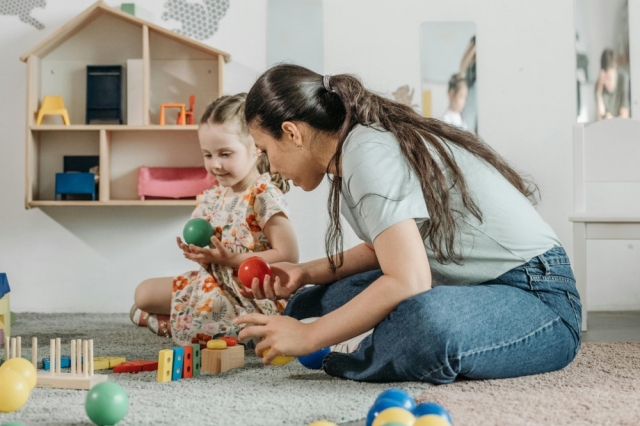Every parent wants the best for their child, especially during that early developmental phase. Of all the processes of early childhood development, the Montessori method has gained a lot of attention, as well as popularity for Montessori learning toys. But one thing to understand is that these are not toys under the conventional standards in the Montessori method. They're known as Montessori materials, intentional, carefully prepared tools designed to support a child in natural growth through independent, self-directed learning.
Although most people refer to them as toys, Montessori materials serve a much deeper purpose than amusement. They are actually intended to promote skills such as concentration, coordination, order, and independence all of which are essential to healthy growth in early childhood. These materials are based on the principle that children learn most effectively by doing, through discovery and exploration. And while they might seem straightforward, each one has an educational intent behind it that addresses the developmental requirements of young students.
Understanding Montessori Materials
Montessori materials are at the heart of Dr. Maria Montessori’s educational philosophy. Unlike typical commercial toys, which often prioritize amusement or passive stimulation, Montessori materials are interactive, self-correcting, and rooted in real-world learning. They are intentionally minimal in design, avoiding distractions like flashing lights or electronic sounds, so the child can focus on the task at hand.
Such materials are designed to capture children's senses, to welcome discovery, and to welcome independent discovery. A wood puzzle that educates a child in geometric shapes is not a pastime, they promote critical thought and perception of space. Many materials also employ natural materials like wood or metal, which create a concrete, earthy experience that enables children to better perceive the physical world.
Even the simple stack toy takes on a higher meaning in the Montessori setting. It refines motor skill control, introduces early mathematical concepts of size and order, and teaches the child patience and attention. Each piece is used for a specific purpose in development and is introduced in a sequence that mirrors the child's natural development pattern. Through working over time, these tools make children more independent, confident, and capable of problem-solving on their own.
Why Families Should Implement Montessori Materials at Home
It is not necessary to have a Montessori-certified classroom to take advantage of this system. With the addition of Montessori materials in your home, your family is able to set up a learning environment that fosters independence, confidence, and curiosity. The home can be an effective extension of the classroom, where learning happens naturally and consistently throughout the day.
Encourages Fine Motor Skills
Activities like threading beads, pouring water, or putting shapes in a board increase small hand muscles and coordination. These are essential skills needed for writing, dressing, and other activities of daily living. Even buttoning a shirt or cutting a banana with a children's knife can strengthen fine motor control.
Develops Cognitive Skills
Montessori materials are designed in such a way that they challenge the child to think independently and solve problems. Sorting trays, colour gradient, and matching cards are some examples that facilitate logical reasoning, pattern formation, and memory.
They consist of various steps, which enable children to learn how to plan, carry out, and complete a task, all skills necessary to learn for life.
Promotes Sensory Exploration
Montessori materials are composed of natural materials like wood or metal, allowing children to touch and feel different textures and weights. Sensory stimulation is key to developing an understanding of the physical world they live in. Sensory learning also fixes relationships in the brain, which lays a basis for even more sophisticated higher-level cognitive activity in the future.
Promotes Language Development
As children interact with their surroundings, they are learning to associate words with things. Describing the color, shape, or function of a Montessori material will introduce new vocabulary naturally, enhancing language acquisition. Parents and care providers can assist by naming objects, asking open-ended questions about them, and answering back with communications of value during play.
Promotes Emotional Independence
Since Montessori materials correct themselves, children can review their own work independently of immediate adult supervision. This builds confidence and perseverance all of which are valuable traits for long-term learning success. When a child can solve a problem on his own, it gives a feeling of accomplishment and reinforces self-esteem, and he or she will be more apt to approach new tasks with confidence.
Practical Tips for Using Montessori Materials at Home
Making Montessori learning at home easy doesn't have to be difficult. Just follow these simple steps families can do:
Create an Ordered, Child-Friendly Environment
Choose one room in your home that your child can reach their materials in easily on their own. Place low shelves, clear bins, and simple labels nearby to make it inviting and simple to navigate. The area needs to be uncluttered and visually calm, welcoming intense, directed work.
Let Your Child Lead
Follow along with your child's interest. If they are interested in the concept of counting, give them number rods or bead chains. If their interest is in matching games, use object-to-picture matching cards. Let them work at their own pace without hurrying or overcorrecting. Observation is key in the Montessori method, with this in mind, see what your child is interested in and build on the interest.
Rotate Materials Periodically
Instead of overwhelming your child with too many options, cycle Montessori materials every few weeks. This keeps the learning environment fresh and new while allowing them to master one skill before moving on to the next. Cycles also serve to highlight different learning objectives and to keep materials relevant.
Involve Them in Daily Tasks
Montessori emphasizes daily life skills. Encourage your child to help with work suited to their age, like setting the table, folding laundry, or watering plants. Such daily tasks promote responsibility and autonomy. Children love to be able to contribute around the home, and these are lessons in care, order, and patience.
Why Montessori Materials Are Worth the Investment
Montessori materials are not just learning aids, they are life aids. Their simplicity, beauty, and purpose make them a durable resource that continues to evolve with your child. And while some parents may refrain from spending at the expense, it's helpful to recall that high-quality, multi-purpose materials have a longer lifespan than fashionable toys, which rapidly become unfashionable.
Even though it is usually used interchangeably with the term Montessori toys on the web, it's interesting to learn about their deeper purpose. These tools are particularly designed to unlock your child's potential, not distract them. And in contrast to most conventional toys, they do not require lights, sound, or screens to draw a child in. Their silence invites attention, presence, and complex interaction.
For parents who are interested in supporting intentional growth and creating a peaceful, meaningful home learning environment, Montessori materials are well worth the investment. They can be introduced progressively and modified according to your child's age, interests, and level of development.
Final Thoughts
Every child learns in a different way, and the Montessori method honors that variation. By incorporating Montessori materials into a child's life, you're not only helping them develop the skills they need, but you're also giving them the opportunity to learn at their own pace, with confidence and joy.
If you’re considering starting your Montessori journey, begin with a few key materials that align with your child’s interests. Over time, you’ll likely see increased focus, independence, and a love of learning that lasts well beyond early childhood.






